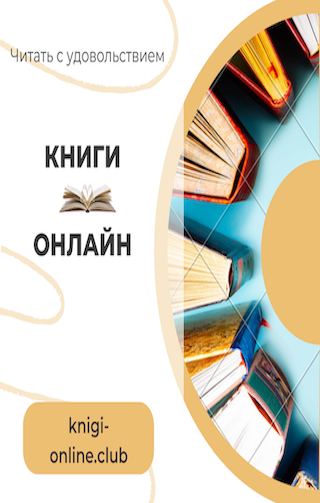pp. 280–81).
306. Andrew (1908, p. 515).
307. Stephenson (1930, pp. 322 and 173). His grandson Nelson Aldrich Rockefeller would be
Gerald Ford’s vice president.
308. Lowenstein (2015); Stephenson (1930); White (1983, pp. 89–90).
309. Paul Warburg, “Defects and Needs of Our Banking System,” New York Times, January 6,
1907, p. 14. Chernow (1993) erroneously gives the date of this article as November 1907, confus- ing it with the date on which the Chamber of Commerce report was written up. The two were not unconnected. As early as 1904, Jacob Schiff had brought Warburg’s ideas to the attention of James J. Stillman, the president of National City and Vanderlip’s mentor. Stillman was initially dismissive, but the seeds were planted.
310. “Leading Financiers for Central Bank,” New York Times, November 12, 1907, p. 2.
311. Stephenson (1930, p. 338).
312. Stephenson (1930, p. 375). So great is the mythos surrounding the Jekyll Island meeting
that phantom attendees have appeared in the literature. Many sources think Benjamin Strong was there, others that Charles Norton, president of First National Bank of New York, was there. It is most likely that neither was.
313. In a well-thought-out treatise a few years earlier, Morawetz (1909) had advocated a na- tionwide clearinghouse association. He actually opposed the idea of a central bank, fearing that it would inevitably become politicized.
314. Calomiris and Haber (2014, chapter 9).
315. Cleveland and Huertas (1985, p. 44).
316. Cleveland and Huertas (1985, pp. 62–67).
317. Vanderlip’s real interest was in international banking, and the Federal Reserve Act of
1913, in which he had had a hand, would officially legalize foreign branching by national banks. 318. Kolko (1963, p. 186).
319. Kolko (1963, p. 189).
320. Carosso (1970, pp. 136–55); Chernow (1990, pp. 149–56).
321. Urofsky (2009, p. 321).
322. DeLong (1991).
323. Kolko (1963, p. 218); Lowenstein (2015, p. 131).
324. Friedman and Schwartz (1963, pp. 168–69).
325. Lowenstein (2015, pp. 86–87).
326. Humphrey (1982); Mints (1945); Timberlake (2007). The problem with these “real
bills” is that they are not in fact real but nominal: the value of the collateral the loans offer varies endogenously with prices. The result is dynamic instability not a self-limiting process. Happily, under a gold standard, also baked into the Federal Reserve Act, this process could not lead to unlimited inflation because gold served as a real anchor to prices, and note creation backed by commercial paper provided “elasticity” only at the margin between notes and demand deposits, which is exactly what the Panic-shaken reformers wanted (Friedman and Schwartz 1963, pp. 190–91). Laughlin was actually a strong proponent of the gold standard, but it is far from clear what role gold was supposed to have played in his system (Mints 1945, p. 207). In his
578 Notes to Chapter 3
monumental history of the Federal Reserve, Allan Meltzer (2003, p. 70) lists both Paul Warburg and Piatt Andrew as proponents of the real-bills doctrine. Both certainly favored a currency based on commercial paper. But Warburg did not invoke the real-bills doctrine nor think that the system was self-limiting; he wanted a central bank that would intervene in the market for commercial paper, which is the direction in which the Fed ultimately evolved (Mehrling 2002, p. 212; White 1983, p. 116). Andrew (1905) was in fact a critic of the real-bills doctrine who pointed to the dynamic-instability problem.
327. Link (1954, pp. 45–53).
328. Urofsky (2009, pp. 282–84).
329. Link (1954, p. 50); Lowenstein (2015, p. 213). The caucus also made sure that loans for
agricultural purposes were included among the “real” bills that were eligible for discount.
330. Wiebe (1962, pp. 130–37).
331. In the original set up, the Secretary of the Treasury, the Comptroller of the Currency,
and the Secretary of Agriculture were ex officio members of the board.
332. Congressional Record, 63d Cong., 2d sess., p. 1446.
333. Chernow (1990, p. 158).
334. Carosso (1970, p. 179); Chernow (1990, pp. 180–81). Kuhn, Loeb had already done so
years earlier in response to New York hearings on the insurance industry.
335. DeLong (1991, p. 218).
336. Woodrow Wilson, “Address to a Joint Session of Congress on Trusts and Monopolies,”
January 20, 1914, The American Presidency Project, https://www.presidency.ucsb.edu /documents/address-joint-session-congress-trusts-and-monopolies (accessed August 14, 2022). 337. He wasn’t so sure about communities of interest—the Northern Securities problem again. The entire passage is worth quoting. “Enterprises, in these modern days of great individual fortunes, are oftentimes interlocked, not by being under the control of the same directors, but by the fact that the greater part of their corporate stock is owned by a single person or group of persons who are in some way ultimately related in interest. We are agreed, I take it, that holding companies should be prohibited, but what of the controlling private ownership of individuals or actually coöperative groups of individuals? Shall the private owners of capital stock be suf- fered to be themselves in effect holding companies? We do not wish, I suppose, to forbid the purchase of stocks by any person who pleases to buy them in such quantities as he can afford, or in any way arbitrarily to limit the sale of stocks to bona fide purchasers. Shall we require the owners of stock, when their voting power in several companies which ought to be indepen- dent of one another would constitute actual control, to make election in which of them they will exercise their right to vote? This question I venture for your consideration” (emphasis
original).
338. Martin (1959, p. 25).
339. The language of Section 7 made it illegal for one company to acquire the stock of an-
other “where the effect of such acquisition may be to substantially lessen competition between the corporation whose stock is so acquired and the corporation making the acquisition” (emphasis added). “Thereby, the use of the




